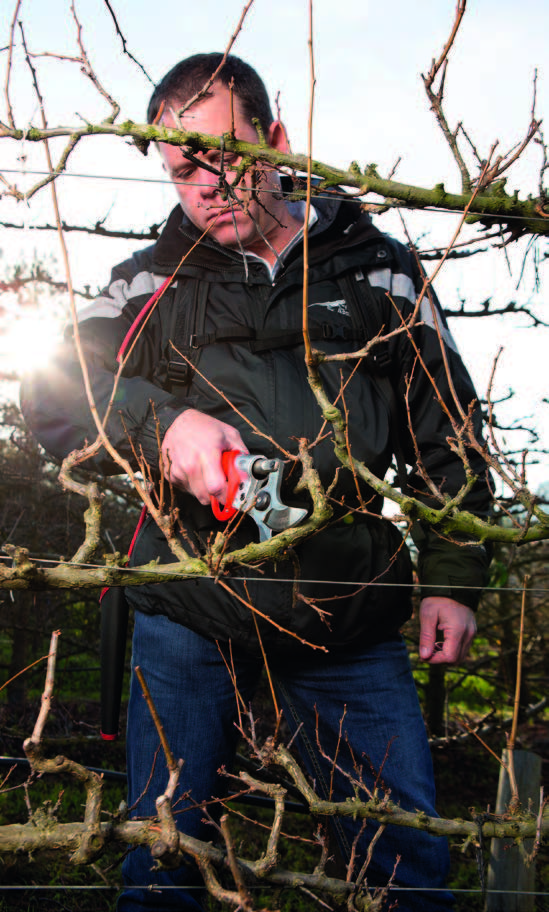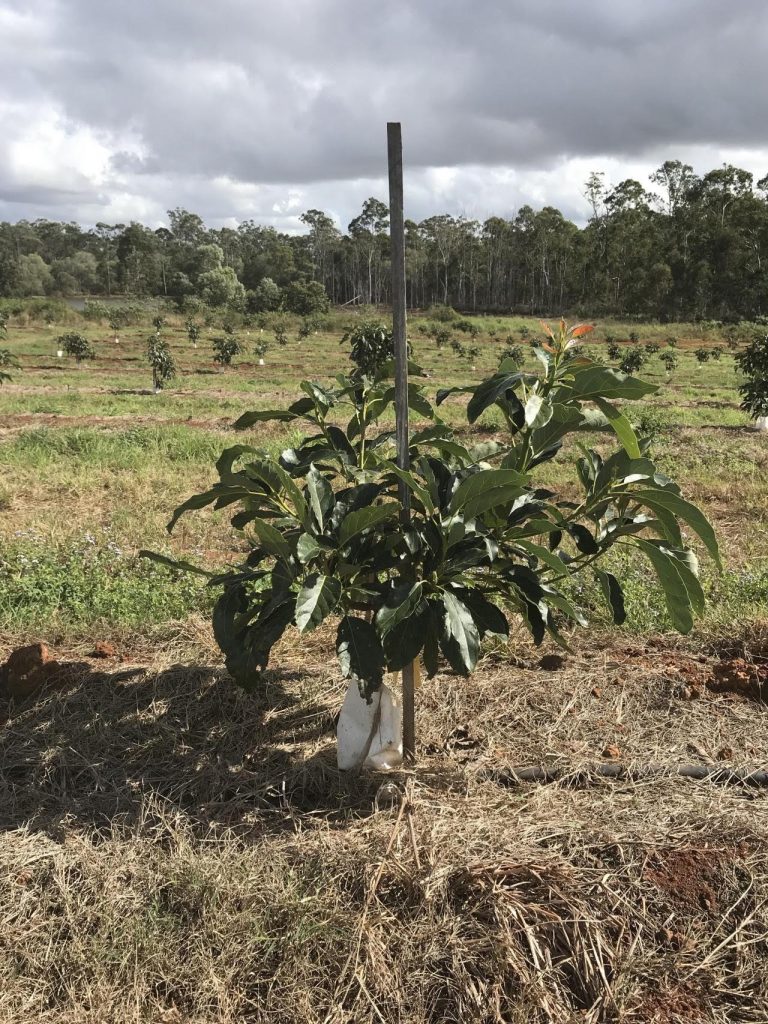When is the best time for pruning? If you want to prune right and learn how to stimulate growth, make sure you read our tips by horticulturalist Ben Sims below! Ben Sims runs a successful Garden maintenance & Landscaping business in Perth and loves to help customers add value to their property. Please find out how and when to prune plants and trees on our blog.
Landscaping professional Ben Sims
Interview about how to prune plants with Ben Sims:
StrataGreen:
Thanks for meeting with us, Ben. So, why is it important to prune our plants?
Ben:
There are four main reasons why we should prune our plants:
• Maintain suitable size and shape
• Encourage optimal flowering and fruiting (pruning at the right time and correctly to increase yields).
• Manage Pest and disease (removing dead and diseased plant material)
• Encourage denser growth like a hedge (regular tip pruning)
StrataGreen:
How and when is the best time to prune our plants and trees?
Ben:
We should prune our plants when they get too big and have outgrown their designated space. If we talk about a fruit tree, we want to reach the fruit quickly. A homeowner might want to be able to prune a tree themselves instead of needing specialised pole pruning equipment and ladders.
We can hard prune or light prune fruit trees depending on whether they fruit on this season's growth or growth several seasons old. Often hard structural pruning is done during dormancy in the winter. This will result in a large amount of change as a response. You cannot go wrong with plants like figs doing a hard winter prune as they fruit off this season's wood. Now, pruning needs to be done with care, skill and knowledge. It is critical to prune at the right time. So make sure you have the right advice and tools before attempting any significant pruning.
If a plant has a build-up of deadwood or disease, it is essential to remove this material. You do not even want diseased leaves left on the ground. Why? They can harbour fungal spores, which can remain until suitable conditions and then re-infect the plant.
Tip pruning can be done at any time, but it is good practice to do it light and regular. The more the plant grows, the more frequently it should be tip pruned. Take an inch or so of growth off at a time, and in response, the plant will grow bushier. You could do this every 2-4 weeks throughout the growing season and less frequently as the growth slowed down.
StrataGreen:
Pruning in winter sure makes sense. Are there different pruning times across Australia?
Ben:
If we compare a fruit tree that can grow in Perth and Tasmania, pruning will be based on its growth in a particular season. Tasmania has a much more extended and more relaxed winter period, so structural winter pruning during dormancy works over a more extended period. In comparison, Perth has short and mild winters. After the winter pruning, you want to wait until after fruiting to do any further pruning. Otherwise, you can lose the fruit.

Best pruning times vary across Australia.
StrataGreen:
Which plants do you think need most pruning?
Ben:
Vigorous plants need the most pruning. Without it, they will grow too big for a particular space and might become too difficult to manage going forward. If a plant needs too much pruning, you have chosen a too big plant for a specific area. There may be a more suitable smaller or less vigorous variety for you.
StrataGreen:
What are common mistakes to avoid when pruning?
Ben:
The biggest mistake you can make with pruning is pruning too hard and killing the plant. There is a 1/3 rule which applies in horticulture. It says that, in general, it is safe to take 1/3 off a plant at a time. This rule applies to grass up to large trees. Conversely, some plants can re-sprout from ground level. This is the best way to rejuvenate certain plants that have become old and woody. Another mistake is pruning at the wrong time. Why? You can lose your flowers and fruit and miss out for an entire year. Finally, not pruning when you have a disease or dead wood build-up can lead to death or severe decline. The plant succumbs to whatever is attacking it or hiding in the deadwood, such as pests/fungus.
Make sure you don't prune the plant too hard!
StrataGreen:
How do you prune correctly? What's your expert advice?
Ben:
Understanding the plant you want to prune, how much you can take off each time, when to prune it, how to prune it, when its flower and fruit, and whether it builds up a lot of dead and diseased material. How you prune and when you prune is based on all these factors.
Use the right tools and techniques as different pruning techniques depend on what you are pruning and trying to achieve. For example, a common practice in orchard crops is called vase pruning. It creates a vase shape and allows for light and air to reach the middle to give a healthier and more abundant tree.
Make sure you have high quality and sharp tools as if you do an excellent clean, brilliant cut, the plant has the best chance to seal the wound and avoid infection. Any time you prune, you open the plant up to the possibility of disease, but most plants will heal naturally if done at the right time and the right way. The worst thing you can do is use cheap or blunt pruners and make a cut that tears and is rough. This can take the longest time to heal or not heal properly and lead to the most excellent chance of the plant becoming infected by pathogens (viruses, bacteria, fungi etc.). You ensure that you prune at the correct distance and on the right angle to the node (growing points along branches/trunks).
Make sure you have high-quality tools like Felco.
StrataGreen:
Is pruning good for the tree/ plant, or does it hurt them?
Ben:
If done correctly, despite what many non-gardeners might think, pruning is good for the tree and can produce a healthier, more abundant and longer-lived tree. Plants are natural food for animals, so they have evolved to be eaten (tip pruned). Trees have grown to shed branches during extended hot/dry periods or windy weather (Eucalypts). Manage mature wood correctly so it doesn't target pests and diseases. Remove diseased material to prevent an outbreak and potential death of the plant.
StrataGreen
Which pruning tools do you recommend?
Ben:
You cannot go past Felco as they are the highest quality tools on the market, and they have been around for a long time. Felco pruners last decades. All you need to do is take care of them right. Every component is replaceable (mail them to Felco). The blades are such high quality that it is easy to re-sharpen them repeatedly. They will be as sharp as new ones again for many years. They are more expensive than others, but over their expected lifetime, they are cost-effective. At the same time, you might own 10-20 cheap pairs, which is terrible for the environment and creates more unnecessary landfills.
Felco Tools are available at StrataGreen.
Now you know how and when to prune plants and trees. Check out StrataGreen's wide range of Felco tools here! For product, enquiries get in touch on 1300 866 367. Email us [email protected] or get in touch with our team. Let us know if you have questions concerning how and when to prune plants and trees, and we would love to help.



Pruning is an important skill for any gardener. You need to know when to prune your plants and what kind of pruner to use. There are different types of pruners available, including loppers, shears, saws, clippers, hedge trimmers, and secateurs. great information in this article on how to prune a tree. Thanks for sharing this article.